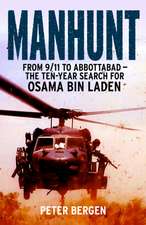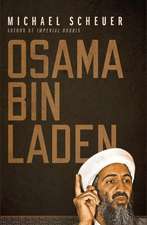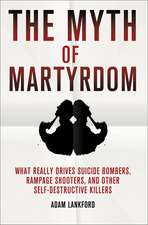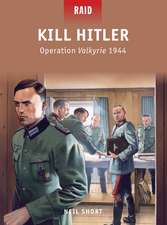Creating Young Martyrs: Conditions That Make Dying in a Terrorist Attack Seem Like a Good Idea: Contemporary Psychology
Autor Alice LoCicero, Samuel J. Sinclairen Limba Engleză Hardback – 29 aug 2008 – vârsta până la 17 ani
| Toate formatele și edițiile | Preț | Express |
|---|---|---|
| Paperback (1) | 169.88 lei 6-8 săpt. | |
| Bloomsbury Publishing – 29 aug 2008 | 169.88 lei 6-8 săpt. | |
| Hardback (1) | 344.38 lei 6-8 săpt. | |
| Bloomsbury Publishing – 29 aug 2008 | 344.38 lei 6-8 săpt. |
Din seria Contemporary Psychology
- 18%
 Preț: 308.13 lei
Preț: 308.13 lei - 20%
 Preț: 177.12 lei
Preț: 177.12 lei - 18%
 Preț: 320.87 lei
Preț: 320.87 lei - 32%
 Preț: 176.45 lei
Preț: 176.45 lei - 27%
 Preț: 366.92 lei
Preț: 366.92 lei - 27%
 Preț: 439.77 lei
Preț: 439.77 lei - 18%
 Preț: 322.21 lei
Preț: 322.21 lei - 14%
 Preț: 361.40 lei
Preț: 361.40 lei - 27%
 Preț: 345.42 lei
Preț: 345.42 lei - 24%
 Preț: 363.98 lei
Preț: 363.98 lei - 17%
 Preț: 325.05 lei
Preț: 325.05 lei - 18%
 Preț: 357.81 lei
Preț: 357.81 lei - 14%
 Preț: 356.57 lei
Preț: 356.57 lei - 34%
 Preț: 169.88 lei
Preț: 169.88 lei - 27%
 Preț: 366.69 lei
Preț: 366.69 lei - 24%
 Preț: 366.50 lei
Preț: 366.50 lei - 27%
 Preț: 345.83 lei
Preț: 345.83 lei - 13%
 Preț: 314.58 lei
Preț: 314.58 lei -
 Preț: 194.96 lei
Preț: 194.96 lei - 26%
 Preț: 359.79 lei
Preț: 359.79 lei
Preț: 344.38 lei
Preț vechi: 475.52 lei
-28% Nou
Puncte Express: 517
Preț estimativ în valută:
65.93€ • 67.84$ • 55.57£
65.93€ • 67.84$ • 55.57£
Carte tipărită la comandă
Livrare economică 01-15 martie
Preluare comenzi: 021 569.72.76
Specificații
ISBN-13: 9780275996901
ISBN-10: 0275996905
Pagini: 148
Dimensiuni: 156 x 235 x 20 mm
Greutate: 0.38 kg
Editura: Bloomsbury Publishing
Colecția Praeger
Seria Contemporary Psychology
Locul publicării:New York, United States
ISBN-10: 0275996905
Pagini: 148
Dimensiuni: 156 x 235 x 20 mm
Greutate: 0.38 kg
Editura: Bloomsbury Publishing
Colecția Praeger
Seria Contemporary Psychology
Locul publicării:New York, United States
Notă biografică
Alice LocCicero is Past President and Co-Founder of the Society of Terrorism Research, as well as Chair of Social Sciences at Endicott College. She is a certified Clinical Psychologist, and has been a faculty member at the Center for Multicultural Training and Boston Medical Center, as well as at Suffolk University. In earlier roles, LoCicero served as Senior Psychologist working with families at Children's Hospital, Boston, and as Clinical Instructor at Harvard Medical School. A member of the Massachusetts Behaviorial Health Disaster Responders, she provides mental health services to family members of victims of terrorism and other manmade and natural disasters. She traveled to Sri Lanka in May and June of 2007 to learn about conditions that make terrorism an appealing idea to some youths.Samuel J. Sinclair is Co-Founder and President of the Society for Terrorism Research (www.societyforterrorismresearch.org). He is currently a Fellow in Psychology at Massachusetts General Hospital and Harvard Medical School. He is also Founder and Co-Editor-in-Chief of the peer-refereed journal Terrorism Research, and developed as well as collaborated with an international Editorial Board comprised of some 80 experts from 14 countries on five continents. Sinclair is also the developer of the Terrorism Catastrophizing Scale, a new assessment tool measuring anticipatory fears about terrorism. He is past recipient of the Association for Threat Assessment Professionals' Chris Hatcher Memorial Scholarship Award.
Cuprins
Chapter OneEndangered ChildrenLife in War-Affected AreasOn the GroundPast Checkpoints, Into TownAcross the GlobeKnowledge, Power, ActionSocial Science of Youthful TerroristsChapter Two2007 Madrid: I Declare this Conference Open.Interdisciplinary Analyses of Aggression and TerrorismUpdate on the Social Science of Aggression and TerrorismThe QuestionsWhat is Terrorism?Defining TerrorismDefining a TerroristPrototypes of TerroristsSocial Scientists Describing Child TerroristsIn the Meantime: Proposal for a Consensus ModelTerrorism and AltruismDistinguishing Legitimate Militaries from Terrorist GroupsWhat About Legitimate Grievances?Could Terrorist Acts Ever be Performed by Normal People?What about Demographics and Motivation?What about the Demographics of Child Terrorists?Comparing Child Terrorists with Child SoldiersWhat about Distribution of Wealth and Resources?A Question that did not come up: Biological Determinism for AggressionChapter ThreeTwenty-First Century Terrorism and the Development of Youthful TerroristsChild Soldier, Child TerroristCognitive Development and Youth in War-Affected AreasGroup-Defined IdentityDeciding to Engage in a Terrorist Act: The Youthful BrainThe Ecology of DevelopmentThe Propensity to Engage in Terrorist ActsThe Production-Line AnalogyPreventing the Recruitment of Youth as MartyrsChapter FourWhen the Last Tamil Has DiedWhen will the war end? Never.What will it be like when the war ends?The Irony of a Common ThemeTalking About ItFreedom to TravelThe Privilege of an EducationHow old should someone be before joining a fighting force?Growing up in War-affected AreasEthnic Conflict: An Informed Account of a Minority Childs ExperienceFrom the Childs Point of View: Very Young Children in War-Affected AreasMiddle ChildhoodOlder Children: Thirteen and BeyondTruth and LiesThings You Know; Things You Dont KnowIt all Looks Clear NowCredible?Chapter FiveVictims of 21st Century War: Are We all in This Together?Costs of War: Young Men and WomenMilitary Service vs. Rebel MilitiaParents of Youthful Terrorists Who have Died in AttacksChain of EventsCreating Martyrs: What Americans Need to KnowCommon American Theories About Youthful TerroristsRadical Differences in ExperienceUnderscoring the Need for Better Knowledge of the WorldEcological PsychologyA Very Good CauseA Very Good Cause: What Do They Know and How do They Know It?Trust and Distrust in the USHow Distrust of News Contributes to Recruitment of Children in War-Affected AreasStop Providing Weapons.ResourcesDont Discount Our GenerationShared Future: Human Rights, Terrorism, and Youth Around the WorldNuclear TabooVery Brief Historical OverviewContemporary Nuclear ThreatNuclear ThreatSome Evidence and Scenarios for Possible Nuclear Attack on the United StatesCould A Terrorist Organization Obtain a Nuclear Weapon?Could a Nuclear Weapon be Transported into the US?Chapter SixThe FishermanOn a Global Scale: The Fishermans Potential NetworkGood guys and bad guys: The bad guys keep on coming.Managing the Difficult ViewHearts and Minds?Winning Hearts and Minds: A Modest ProposalAmerican Compassion and MercyKnowing Hearts and MindsWhy try to understand those who would perpetrate violence on innocent people?Northern IrelandChallenging misperceptions: Everyday heroismAbout the AuthorsSeries Afterword





















